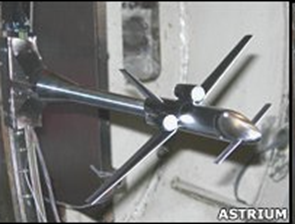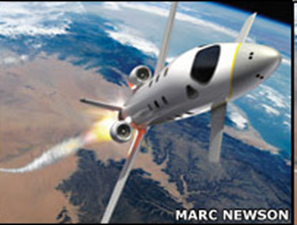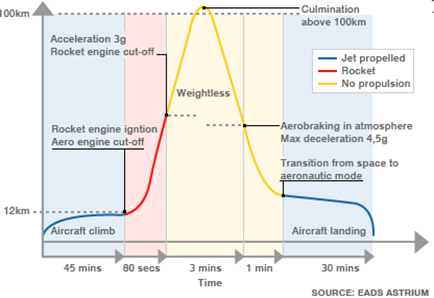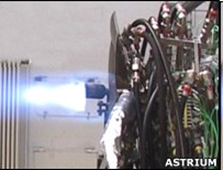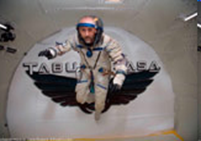Explorer Anousheh Ansari brought space down to Earth
She is the first to sniff space and declare that it smelt like a burnt almond cookie.
In September, 2006, Anousheh Ansari became the world's first private female explorer and, without realizing it, the voice of the quotidian observer of the unknown.
She brought space down to Earth.
The first Iranian-born person in space described the difficulty of washing her hair in zero gravity and of her "internal organs doing a cha-cha inside my belly" when the Russian space capsule, Soyuz TMA-9, started its orbit of Earth before docking for an eight-day visit to the International Space Station.
"What happened with my blog and all the attention I was getting was unexpected," she says during a recent visit to the Ontario Science Centre in Toronto. The daily blog, the first to be written from space, received more than 50 million hits and elicited comments from people around the world.
"A lot of people saw hope," she says. "They were looking at me as one of the most unlikely candidates to be able to do something like this."
In fact, her journey into space is less impressive than the one that got her to the launch pad.
Five years after the Iranian revolution in 1979, she and her younger sister immigrated to the United States with their parents, who wanted their children to get a good education. When they arrived, they lived with an aunt for several months. They were not a wealthy family. "When we left, we basically left with nothing," she says. "We just packed our bags and came."
The transition to American life was not easy. A teenager of 17, she didn't speak a word of English. "Teenagers are a species all by themselves," she says. "They can be cruel, not warm and welcoming at times. I was just in high school to study. I just went to classes and did what I had to do."
She even had to shelve the idea of becoming an astronaut, which had been a dream from childhood. "When I came here, I thought to myself, 'I can be an astronaut now. I'm in America.' That's what I wanted to do - study astrophysics and become an astronaut ... [but] I wasn't a U.S. citizen and I figured, 'Well, what are my chances of becoming an astronaut?' I knew it was not very high, and I knew I had to study something so that I could get a job immediately out of college to support myself and help my family."
So she completed a degree in electrical and computer engineering followed by a master's in electrical engineering. "I had read that electrical engineering and telecommunications, especially, were a grow- ing field," she offers with a shrug in her finely tailored clothing.
In the early 1990s, she persuaded her husband, Hamid, and her brother-in-law, Amir, to help her start Telecom Technologies with their combined savings.
In 2001, the company was bought by Sonus Networks for about half a billion dollars.
Ms. Ansari had still not lost her passion for space. "When we had employee meetings, I would make all my managers dress up in Star Wars costumes, and they would enter the room with Star Wars music playing," she says with only a suggestion of a smile breaking her serious composure.
It was a meeting with Peter Diamandis, chairman and founder of the X Prize Foundation, a non-profit educational organization, that would lead to her space travel. Mr. Diamandis was seeking funding for a competition that encouraged entrepreneurial initiatives to build the first non-government piloted spacecraft. He had heard of her fascination with space.
Ms. Ansari and her family decided to be title sponsors with a donation of $10-million (U.S.). Subsequently renamed the Ansari X Prize, the money was awarded in 2004 to Microsoft co-founder Paul Allen and well-known aviation designer Burt Rutan for their Space-
ShipOne.
The family also announced a partnership with Space Adventures Ltd. and the Russian Federal Space Agency to create commercial space vehicles. To understand the training required for space travel, and as a back-up to a civilian adventurer who was scheduled to fly, Ms. Ansari spent six months at Star City, the Russian cosmonaut facility outside Moscow. Already fluent in English, French and her native tongue, Farsi, she had to learn Russian. "Only three weeks before the flight, they told me that the person who was supposed
to fly failed his medical exam, and I had the opportunity
to do it. It was a complete
surprise."
The flight cost her $20-million. "The most memorable moment was when I first saw Earth from Soyuz. It was very emotional. I was crying," she says. "It was beautiful, an amazing image. It has been a year and a half, and I can see it, still, when I am telling you about it. There's almost a warmth coming from Earth. It is sort of glowing, and it's surrounded by darkness. It gives you a certain energy. You can feel that it is alive."
Since her return to Earth, Ms. Ansari has continued her upward trajectory with a guest appearance on Oprah Winfrey's television show and other talk shows, frequent invitations to speak and a memoir under way.
Commercial space travel will have a profound effect on the way people see the planet, she says. "When you're up there, you do look at the world differently. You do see a lot of possibilities for people working together. You see it as one. You're not looking at your country or your hometown. You're looking at Earth."
In 2006, with her family, she started another company, Prodea Systems, which is developing products for "the digital home" that would integrate services through the television, as one example. "The goal is that new technologies and services would be accessible to everyone, regardless of their technological savvy," she explains.
While her motive is entrepreneurial, it is more social than economic, she says. "Technology doesn't recognize any difference in race or religion or age ... and it has made us closer. It has cut through language barriers and distances."
Her schedule is hectic, the 41-year-old admits. "I spend 10 or 12 hours in the office working, and I think, 'Why am I doing this?' And I remember that I am here for a reason. I have a purpose. ...
"I think that 20 or 30 years from now, people will look back at this time as a great era of evolution for our species."
SARAH HAMPSON
